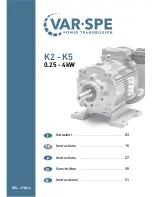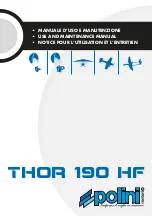
Fuel Delivery System
Page 5A-4
90-863758060 AUGUST 2006
• The vent and fuel fill systems must be carefully designed to inhibit water entry, a
common source of engine problems. Proper location of the fill and vent fittings and the
use of a good sealing fill cap is critical. A goose‑neck in the vent hose can also be used
to impede water entry.
• The fuel pickup tube and fittings must be at least as large as the fuel lines to minimize
fuel restriction (the larger the better). A filter or sock on the end of the tube is
recommended to prevent debris at the bottom of the tank from clogging the other fuel
system components (especially anti‑siphon valve).
• A tank with baffles or a sump is recommended for applications that will be used for
aggressive boat maneuvers (i.e. ski boats) to prevent fuel aeration and starvation in
turns.
• On carbureted engines, the fuel tank should be mounted below carburetor level or
gravity feed may unseat the carburetor fuel inlet needle causing flooding.
• The fuel tank should be mounted as close to the level of the fuel inlet connection on
the engine as possible. Excessive tank height can cause difficulties in finding a suitable
anti‑siphon valve. Conversely, the fuel tank distance below the fuel inlet connection
has a major effect on fuel system restriction and should be kept as close as possible
to the inlet (see chart).
Fuel Tank Bottom versus Fuel Inlet Height (Measured from bottom of fuel tank to height of fuel inlet
fitting.)
Less than 50.8 cm (<20 in.)
Good
50.8 cm–101.6 cm (20–40 in)
Marginal
Greater than 101.6 cm (>40 in.)
Undesirable
• The amount of fuel tank surface area that is exposed to the engine compartment can
have a significant affect on fuel temperature. It may be necessary to insulate the tank
if fuel inlet temperature is excessive. See Fuel System Pressure and Temperature
Test in Section 4.
• Tank should be thoroughly flushed by the installer or tank supplier prior to usage to
avoid getting contaminants in engine fuel system. All fuel tank openings should be
sealed until fuel connections are made to avoid getting debris (fiberglass dust, etc.) in
tank. Contaminants can clog the fuel filters and cause poor performance and possible
engine damage, particularly on fuel injected models.
Anti‑Siphon Valve
U.S. boating standards and regulations specify that an anti‑siphon valve be used on any
application where any portion of the fuel line falls below the top of the fuel tank. This valve
serves to minimize the amount of fuel that could leak into the bilge of the boat in the event
of a fuel system leak. A mechanical anti‑siphon valve or an electrically operated fuel
shut‑off valve is acceptable for this purpose and should be installed in accordance with
industry standards and the manufacturer's instructions. The mechanical valve must be
carefully sized to the fuel pressure head produced in a given application (a function of the
fuel level height between the lowest and highest point in the system). The valve must check
the flow of fuel when the engine is not running, yet avoid excessive restriction when the
engine is operating. An overall fuel system pressure drop of 6.9 kPa (1 psi) vacuum or less
is desirable but may not be achievable in all cases. See
Fuel System Pressure and
Temperature Test
in
Section 4.
In these cases, it is recommended that an electric fuel
shut‑off valve be used.
Summary of Contents for 8.1S Horizon
Page 5: ...Page iv...
Page 19: ...Important Information Notes Page 1A 14 90 863758060 AUGUST 2006...
Page 53: ...Transmission and Drive Line Notes Page 2A 14 90 863758060 AUGUST 2006...
Page 59: ...Air Intake System Notes Page 4A 6 90 863758060 AUGUST 2006...
Page 119: ...Cooling System Notes Page 7A 22 90 863758060 AUGUST 2006...
Page 133: ...Electrical System Notes Page 8A 14 90 863758060 AUGUST 2006...
Page 153: ...Instrumentation and Controls Notes Page 9A 20 90 863758060 AUGUST 2006...
Page 163: ...Predelivery Preparation Notes Page 10A 10 90 863758060 AUGUST 2006...
















































